Rosie's Walk

Children’s play mat with pictures of a road and landmarks (Toltemara, iStockphoto)

Children’s play mat with pictures of a road and landmarks (Toltemara, iStockphoto)
How does this align with my curriculum?
| Grade | Course | Topic |
|---|
Students develop and apply communicating, sequencing and spatial reasoning skills as they create and navigate a maze to get Rosie the Hen safely home for lunch.
Overview
In this inquiry, students will take on different coding roles to create and navigate a maze based on a simple story, Rosie’s Walk. This is a “no-device” introduction to basic coding skills.
Timing
45-60 minutes
Setting the Stage
Many practices that educators use every day support the development of computational thinking and more specifically, coding. If you have ever asked students to put things in sequence, to create a set of instructions for doing something, create a repeating pattern or make decisions, then you have helped them build the foundational skills for learning to code. The story of Rosie's Walk provides an opportunity for a “no-device” introduction to basic coding skills.
This inquiry could begin from:
- questions or comments initiated by the students about maps, patterns, or sequences. Discuss using questions such as:
- “Here is our recipe for making soup. Why do you think the steps are numbered?”
- “Why do you think some parts of the map are blue?”
- “Where do you see numbers on the map? Why do you think they are there?”
- a map brought in by a student from a visit to a local landmark, zoo or other attraction. Discuss using questions such as:
- “What is the same or different about this map from other maps we have looked at?”
- “Which map is easier to read? Why do you think that?”
- “What features does the route map have that the zoo map does not?” (e.g., roads, bridges, rivers)
- a book such as Rosie's Walk, Make Way for Ducklings or The Gingerbread Man. Discuss using questions such as:
- “If we were to make a story map of this book (e.g., Make Way for Ducklings), what would be some of the places that we would have to include? If we were to visualize the story map, where would you see those places being on that map?” (e.g., the river might go in the middle; the pond might be at the start of the map)
- “What patterns did you hear in the story?” (e.g., every time someone wants to eat him the Gingerbread Man chants: “Run, run, as fast as you can, you can’t catch me I’m the Gingerbread Man.”)


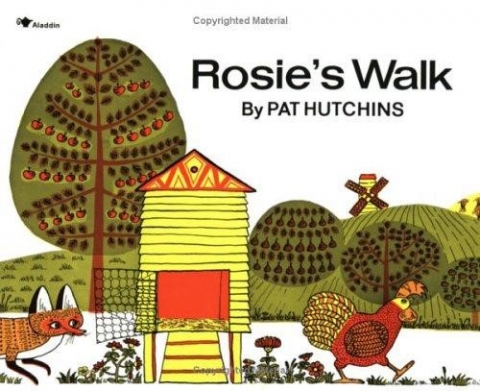
Details
- Floor grid (this may be a learning carpet or a homemade grid made from a flat bed sheet or other material. If making your own floor grid, consider a smaller grid – a 5x6 or 5x8 grid works well for beginning coding experiences)
- obstacles for floor grid
- Rosie’s Walk by Pat Hutchins
of the story characters and places, with a tablemat-sized grid for placement and symbols for sequencing. How this is set up in your classroom will dictate how many sets you should print and laminate (recommend one set for every 3 students).
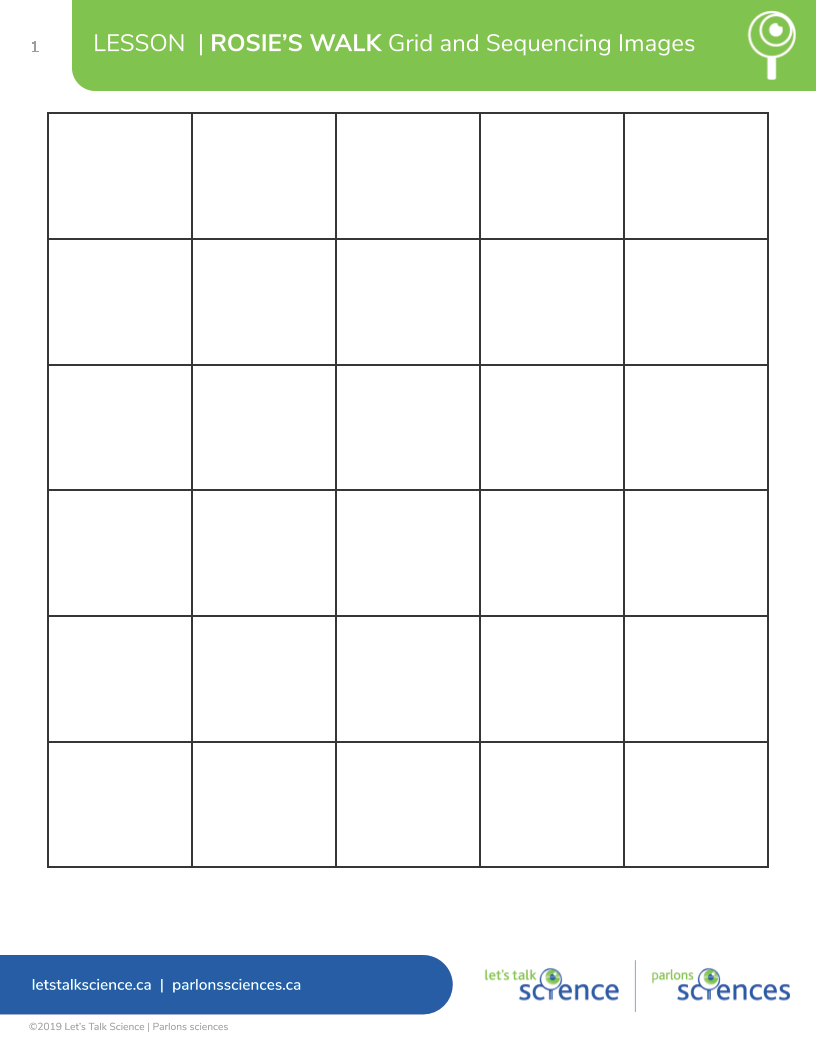
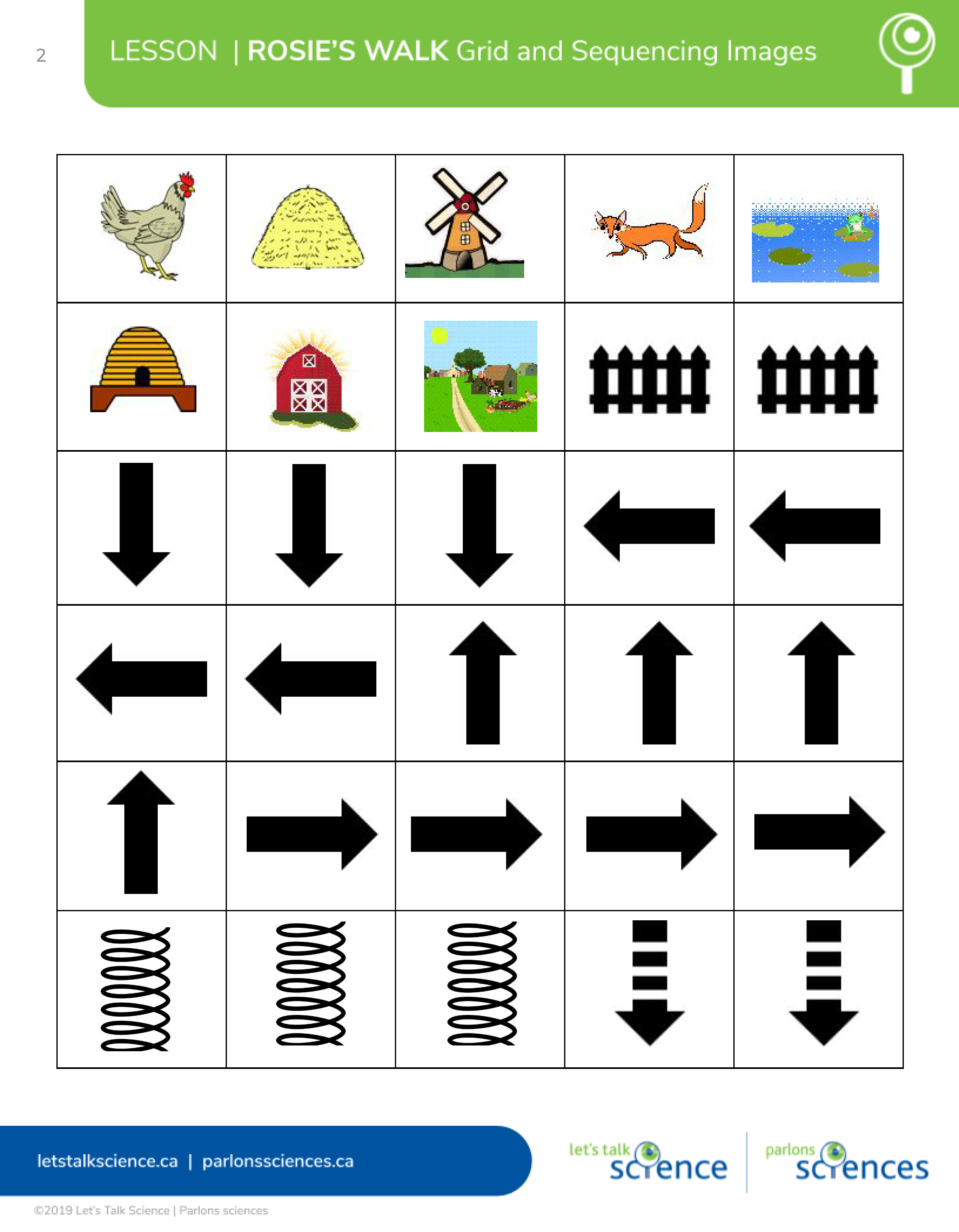
- make copies of Rosie's Walk Grid and Sequencing Images
- cut out objects for floor grid
- print and laminate (optional) Rosie’s Walk Grid and Sequencing Images
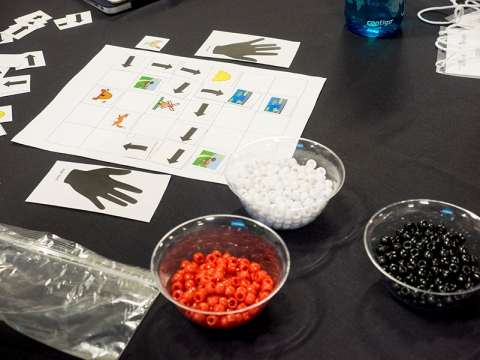
Students use the Sequence Organizer learning strategy to develop and apply the skills of Communicating, Sequencing and Spatial Reasoning as they create and navigate a path to get Rosie the Hen safely home for lunch.
Students:
- brainstorm a list of words that might be used to get someone from one place to another and record them on chart paper for future reference.
- Educator introduces the floor grid and the obstacles, and explains the challenge: to guide someone from the starting point on the grid to the end point. Only the directions on the chart are allowed (i.e., cannot go diagonally).
- take turns being each of the following three roles:
- the Programmer, who places the obstacles and gives the instructions
- the Controller, who follows the instructions given by the Programmer
- the De-Bugger , who fixes the instructions if something goes wrong. Obstacles may be moved around as different students take their turn in each role.
- Educator asks probing and clarifying questions to highlight the importance of the Controller only doing exactly what s/he is instructed to do, and of the Programmer making sure instructions are clear and precise.
- discuss challenges that were encountered throughout the experience (e.g., “It was hard to be the Controller because I could only do what I was told.” “We noticed that we had to give really exact directions or the Controller would get stuck.”).
- listen to Rosie’s Walk.
- recall sequence of the places mentioned in the story and the positional vocabulary words.
- Educator records on chart paper the sequence using words and/or pictures and posts for students’ future reference. With students, refer back to list of positional words used with the floor grid and add any additional words from the story (e.g., over, through, around, past).
- compare perspective of the floor grid and a tabletop version of the floor grid.
- Educator asks guiding and probing questions to connect prior thinking and knowledge about perspectives (i.e., students will be looking at the tabletop grid from a “top-down” or “bird’s eye” perspective).
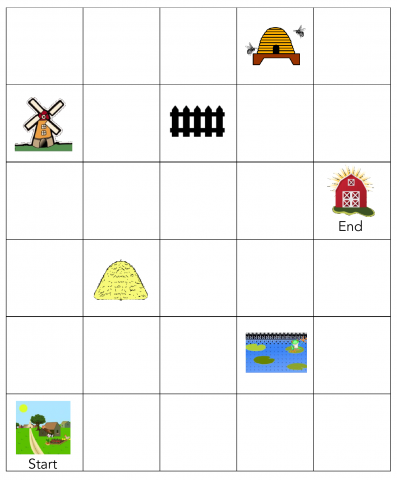
- observe coding symbols for common movements, and note positional words on the chart that do not have symbols (e.g., go round, through).
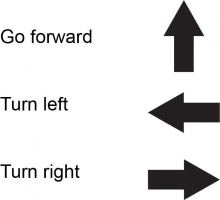
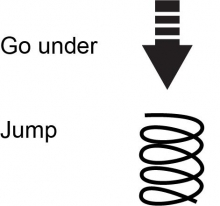
- suggest coding symbols for positional words from Rosie’s Walk that do not have symbols. Record on the chart. (e.g., “One of my games uses a spring for jumping. We could use a spring shape to show that Rosie has to jump over the haystack.”)
- in the role of Programmer, place the images of the objects from the story on the grid paper, creating a maze for Rosie to go through.
- in the role of Programmer, use the coding symbol cards to guide Rosie’s walk home following the sequence in the book. Be sure to place the code beside the grid so that the Controller has to follow the instructions when moving Rosie around.
- Educator ensures that the code is placed correctly.

- in the role of Controller, follow the directions laid out by the Programmer to take Rosie through the maze to her home.
- in the role of Debugger, modify the coded instructions as needed to help the Controller get Rosie through the maze to her home.
- change roles, allowing the Programmer to rearrange the obstacles to create a different maze.
- Educator may remove the restriction of following the sequence of the story, to allow for more variations in the maze and the coding.
Observe and document, using anecdotal comments, photos and/or video recordings, student’s ability to:
- Sequence – students recall the sequence of events in the story, and record their sequential thinking using common coding symbols to indicate the path for Rosie to walk
- Spatial reasoning – students use positional language when coding Rosie’s walk through the barnyard
- Communicate – students listen for and recall details of positional language used in the story
- Communicate – students use coding symbols to create a path for Rosie
| Students: Saying, Doing, Representing |
Educator: Responding, Challenging |
|---|---|
| Students work in role as the Programmer (places the obstacles, gives the instructions), the Controller (follows the instructions given to get from starting point to destination) and the De-Bugger (fixes the instructions if something goes wrong) using the floor-sized grid to get another student from the starting point to the goal. |
|
| Students listen to the story Rosie’s Walk and orally list places mentioned and positional vocabulary used. |
|
| Students observe coding symbols for common movements and suggest coding symbols for positional words from Rosie’s Walk that do not have one. |
|
| Students, in the role of Programmer, place the images from the story on the grid to create a maze for Rosie, then use the coding symbol cards to build a path for Rosie’s walk following the sequence in the book. |
|
| Students, in the role of Controller, follow the directions laid out by the Programmer to take Rosie through the maze to her home. |
|
| Students, in the role of Debugger, modify the coded instructions as needed to help the Controller get Rosie through the maze to her home. |
|
| Students change roles, rearranging the images to create different mazes. |
|
Literacy
- use a map to retell a story
- recognize simple patterns in texts
- identify the important information in a story using key words to help them understand, learn and remember
Mathematical Thinking
- describe the relative locations of objects or people using positional language (e.g., describe how Rosie went under the fence, over the haystack)
- describe the relative locations of objects on concrete maps (e.g., create a map of Rosie's journey around the backyard)
- represent using pictures, diagrams, graphs, tables, numbers, words, and/or symbols (e.g., use arrows to outline the route Rosie walks)
Other
- develop spatial skills using elements of maps such as direction to construct maps for specific purposes (e.g., construct a map of the story)
- use maps to communicate key pieces of information (e.g., the landmarks in the barnyard)
- put the events in order on a timeline (e.g., where Rosie went first, next, last)
If your students are interested in learning more, the following may provoke their curiosity:
- Challenge students to create landmark tiles and cards so that they can create a map of their trip from home to school.
- After listening to other familiar books such as The Gingerbread Man, We’re Going on a Bear Hunt, or There was an Old Lady Who Swallowed a Fly, students use a floor or tabletop grid to code a map of the story.
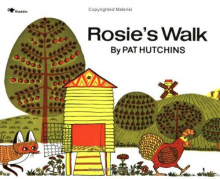
Rosie's Walk
by Pat Hutchins
Rosie the hen leaves the chicken coop and sets out for a little walk. Right behind her is the fox, slyly trying to catch up with her. Rosie's walk is quiet, uneventful and eventually leads her back to the coop, blissfully unaware of the fox's travails as he tries -- unsuccessfully -- to navigate the obstacle course that Rosie has led him through.
ISBN: 9780020437505
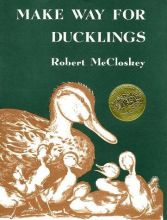
Make Way For Ducklings
by Robert McCloskey
The book tells the story of a pair of mallard ducks who decide to raise their family on an island in the lagoon in Boston Public Garden, a park in the center of Boston, Massachusetts.
ISBN: 9780140564341
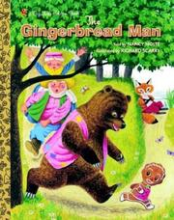
The Gingerbread Man
By Nancy Nolte
A folktale about a gingerbread man who escapes from various pursuers and eventually meets his demise between the jaws of a sly fox.
ISBN 9780375825897
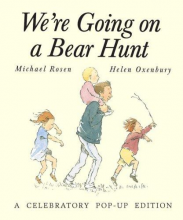
We're Going on a Bear Hunt
by Michael Rosen and Helen Oxenbury
We're going on a bear hunt. We're going to catch a big one. What a beautiful day! We're not scared.
ISBN: 9780689853494

I Know an Old Lady Who Swallowed a Fly
by Nadine Bernard Westcott
I know an old lady who swallowed a fly. I don't know why she swallowed a fly - perhaps she'll die.
ISBN: 9780439573306
Materials
- Floor grid (this may be a learning carpet or a homemade grid made from a flat bed sheet or other material. If making your own floor grid, consider a smaller grid – a 5x6 or 5x8 grid works well for beginning coding experiences)
- obstacles for floor grid
- Rosie’s Walk by Pat Hutchins
of the story characters and places, with a tablemat-sized grid for placement and symbols for sequencing. How this is set up in your classroom will dictate how many sets you should print and laminate (recommend one set for every 3 students).


Preparation
- make copies of Rosie's Walk Grid and Sequencing Images
- cut out objects for floor grid
- print and laminate (optional) Rosie’s Walk Grid and Sequencing Images

What to Do
Students use the Sequence Organizer learning strategy to develop and apply the skills of Communicating, Sequencing and Spatial Reasoning as they create and navigate a path to get Rosie the Hen safely home for lunch.
Students:
- brainstorm a list of words that might be used to get someone from one place to another and record them on chart paper for future reference.
- Educator introduces the floor grid and the obstacles, and explains the challenge: to guide someone from the starting point on the grid to the end point. Only the directions on the chart are allowed (i.e., cannot go diagonally).
- take turns being each of the following three roles:
- the Programmer, who places the obstacles and gives the instructions
- the Controller, who follows the instructions given by the Programmer
- the De-Bugger , who fixes the instructions if something goes wrong. Obstacles may be moved around as different students take their turn in each role.
- Educator asks probing and clarifying questions to highlight the importance of the Controller only doing exactly what s/he is instructed to do, and of the Programmer making sure instructions are clear and precise.
- discuss challenges that were encountered throughout the experience (e.g., “It was hard to be the Controller because I could only do what I was told.” “We noticed that we had to give really exact directions or the Controller would get stuck.”).
- listen to Rosie’s Walk.
- recall sequence of the places mentioned in the story and the positional vocabulary words.
- Educator records on chart paper the sequence using words and/or pictures and posts for students’ future reference. With students, refer back to list of positional words used with the floor grid and add any additional words from the story (e.g., over, through, around, past).
- compare perspective of the floor grid and a tabletop version of the floor grid.
- Educator asks guiding and probing questions to connect prior thinking and knowledge about perspectives (i.e., students will be looking at the tabletop grid from a “top-down” or “bird’s eye” perspective).

- observe coding symbols for common movements, and note positional words on the chart that do not have symbols (e.g., go round, through).


- suggest coding symbols for positional words from Rosie’s Walk that do not have symbols. Record on the chart. (e.g., “One of my games uses a spring for jumping. We could use a spring shape to show that Rosie has to jump over the haystack.”)
- in the role of Programmer, place the images of the objects from the story on the grid paper, creating a maze for Rosie to go through.
- in the role of Programmer, use the coding symbol cards to guide Rosie’s walk home following the sequence in the book. Be sure to place the code beside the grid so that the Controller has to follow the instructions when moving Rosie around.
- Educator ensures that the code is placed correctly.

- in the role of Controller, follow the directions laid out by the Programmer to take Rosie through the maze to her home.
- in the role of Debugger, modify the coded instructions as needed to help the Controller get Rosie through the maze to her home.
- change roles, allowing the Programmer to rearrange the obstacles to create a different maze.
- Educator may remove the restriction of following the sequence of the story, to allow for more variations in the maze and the coding.
Assessment
Observe and document, using anecdotal comments, photos and/or video recordings, student’s ability to:
- Sequence – students recall the sequence of events in the story, and record their sequential thinking using common coding symbols to indicate the path for Rosie to walk
- Spatial reasoning – students use positional language when coding Rosie’s walk through the barnyard
- Communicate – students listen for and recall details of positional language used in the story
- Communicate – students use coding symbols to create a path for Rosie
Co-constructed Learning
| Students: Saying, Doing, Representing |
Educator: Responding, Challenging |
|---|---|
| Students work in role as the Programmer (places the obstacles, gives the instructions), the Controller (follows the instructions given to get from starting point to destination) and the De-Bugger (fixes the instructions if something goes wrong) using the floor-sized grid to get another student from the starting point to the goal. |
|
| Students listen to the story Rosie’s Walk and orally list places mentioned and positional vocabulary used. |
|
| Students observe coding symbols for common movements and suggest coding symbols for positional words from Rosie’s Walk that do not have one. |
|
| Students, in the role of Programmer, place the images from the story on the grid to create a maze for Rosie, then use the coding symbol cards to build a path for Rosie’s walk following the sequence in the book. |
|
| Students, in the role of Controller, follow the directions laid out by the Programmer to take Rosie through the maze to her home. |
|
| Students, in the role of Debugger, modify the coded instructions as needed to help the Controller get Rosie through the maze to her home. |
|
| Students change roles, rearranging the images to create different mazes. |
|
Cross-curricular Connections
Literacy
- use a map to retell a story
- recognize simple patterns in texts
- identify the important information in a story using key words to help them understand, learn and remember
Mathematical Thinking
- describe the relative locations of objects or people using positional language (e.g., describe how Rosie went under the fence, over the haystack)
- describe the relative locations of objects on concrete maps (e.g., create a map of Rosie's journey around the backyard)
- represent using pictures, diagrams, graphs, tables, numbers, words, and/or symbols (e.g., use arrows to outline the route Rosie walks)
Other
- develop spatial skills using elements of maps such as direction to construct maps for specific purposes (e.g., construct a map of the story)
- use maps to communicate key pieces of information (e.g., the landmarks in the barnyard)
- put the events in order on a timeline (e.g., where Rosie went first, next, last)
Extending the Learning
If your students are interested in learning more, the following may provoke their curiosity:
- Challenge students to create landmark tiles and cards so that they can create a map of their trip from home to school.
- After listening to other familiar books such as The Gingerbread Man, We’re Going on a Bear Hunt, or There was an Old Lady Who Swallowed a Fly, students use a floor or tabletop grid to code a map of the story.
Supporting Media

Rosie's Walk
by Pat Hutchins
Rosie the hen leaves the chicken coop and sets out for a little walk. Right behind her is the fox, slyly trying to catch up with her. Rosie's walk is quiet, uneventful and eventually leads her back to the coop, blissfully unaware of the fox's travails as he tries -- unsuccessfully -- to navigate the obstacle course that Rosie has led him through.
ISBN: 9780020437505

Make Way For Ducklings
by Robert McCloskey
The book tells the story of a pair of mallard ducks who decide to raise their family on an island in the lagoon in Boston Public Garden, a park in the center of Boston, Massachusetts.
ISBN: 9780140564341

The Gingerbread Man
By Nancy Nolte
A folktale about a gingerbread man who escapes from various pursuers and eventually meets his demise between the jaws of a sly fox.
ISBN 9780375825897

We're Going on a Bear Hunt
by Michael Rosen and Helen Oxenbury
We're going on a bear hunt. We're going to catch a big one. What a beautiful day! We're not scared.
ISBN: 9780689853494

I Know an Old Lady Who Swallowed a Fly
by Nadine Bernard Westcott
I know an old lady who swallowed a fly. I don't know why she swallowed a fly - perhaps she'll die.
ISBN: 9780439573306